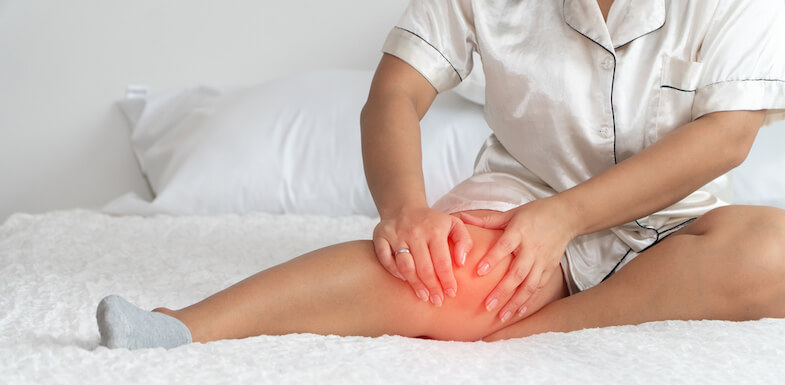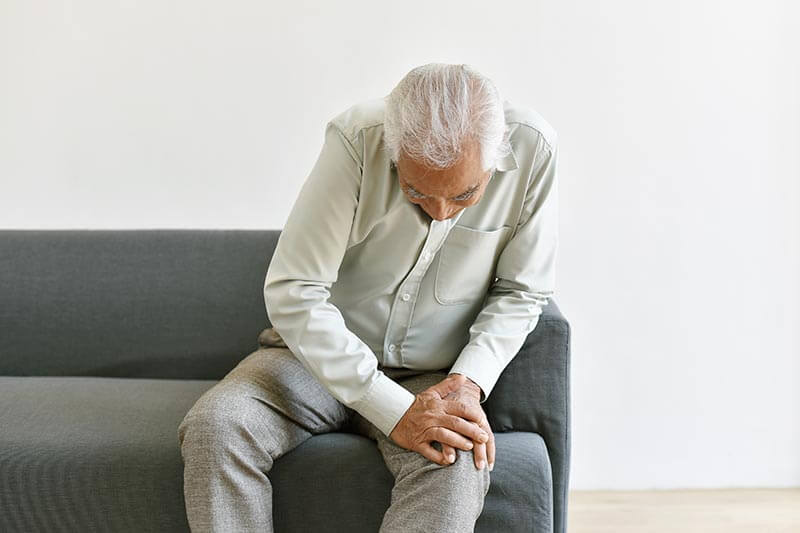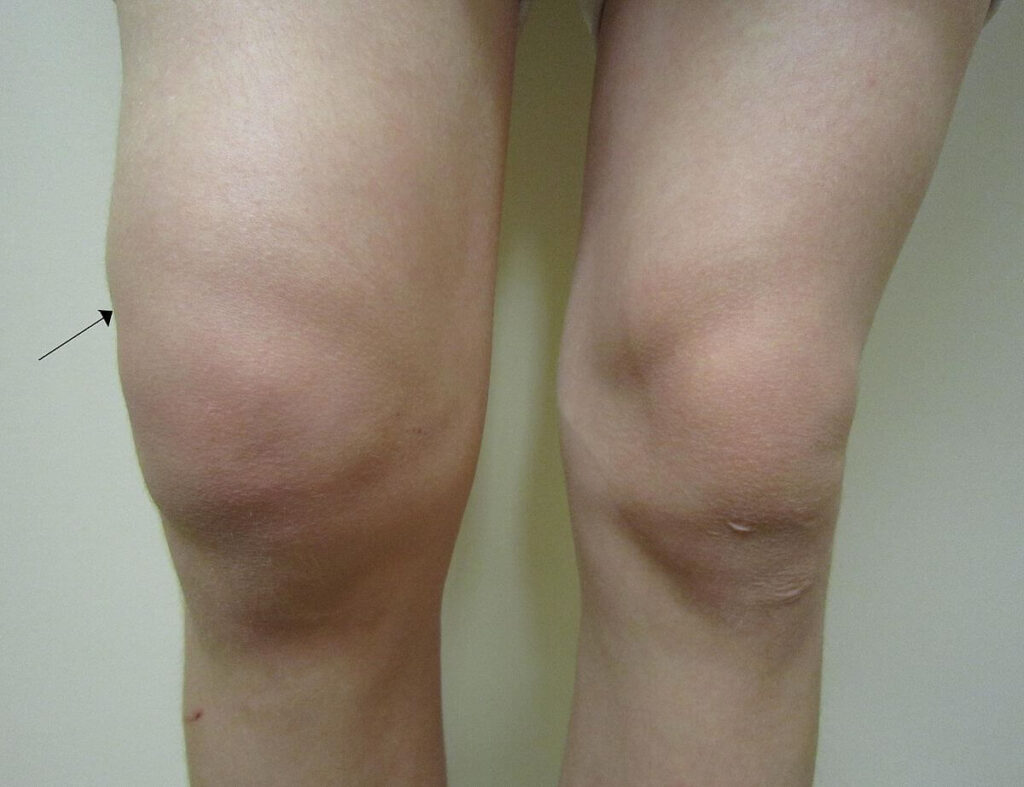A peaceful night’s rest is a coveted treasure for many, offering rejuvenation and a fresh start to each new day. However, for those who experience knee pain when lying down on their side, sleep can become an elusive dream. The discomfort, whether occasional or chronic, can significantly disrupt one’s sleep patterns and quality of life. In this article, we delve into the enigma of knee pain when lying on your side, aiming to shed light on five possible causes behind this unsettling phenomenon.
While knee pain can manifest in various forms and intensities, its occurrence during side-sleeping poses unique challenges. This position subjects the knees to pressure and strain, and understanding the root causes of this discomfort is essential for effective management and relief.
We will explore a range of factors that can contribute to knee pain when sleeping on your side. Some causes may be linked to underlying medical conditions, while others might be related to lifestyle choices, posture, or even mattress quality. By unraveling these causes, you can gain insights into how to alleviate or prevent knee pain, enabling you to enjoy restful nights once more.
So, let’s embark on this journey of discovery to understand the potential culprits behind knee pain when lying down on your side, empowering you with the knowledge needed to reclaim the comfort and tranquility of your nights.
Causes of Knee Pain When Lying Down:
- Osteoarthritis: One of the most common culprits behind knee pain during side-sleeping is osteoarthritis. Osteoarthritis is a degenerative joint condition that can affect the knees. When you lie on your side, the weight of your body can cause the arthritic joint surfaces to rub against each other, resulting in pain and discomfort. The pain may be worse when you first lay down and gradually improve as you change positions or move your knees. If you suspect osteoarthritis, consult with a healthcare professional for a proper diagnosis and treatment options, which may include pain management techniques, physical therapy, or even surgical interventions in severe cases.
- Bursitis: Knee bursitis, an inflammation of the small, fluid-filled sacs that cushion the knee joint, can also be a source of discomfort when side-sleeping. The pressure applied to the knees in this position may exacerbate the inflammation, leading to pain and tenderness. Bursitis can be caused by overuse, trauma, or infection. If you suspect knee bursitis, seeking medical advice is essential to determine the cause and receive appropriate treatment, which may include rest, ice, anti-inflammatory medications, or, in some cases, drainage and antibiotics.
- Poor Sleeping Posture: Sometimes, the pain may not be related to an underlying medical condition but rather to your sleeping posture. If your knees are not properly aligned or if you place too much pressure on them while sleeping on your side, it can lead to discomfort. Simple adjustments, like using a pillow to support your knees, can help alleviate this pain. Ensure that your pillow is of the right height to maintain proper alignment of your spine and knees.
- Mattress Quality: The type and quality of your mattress can also play a crucial role in the occurrence of knee pain during side-sleeping. An old or sagging mattress may not provide adequate support for your body, leading to discomfort and pain. Investing in a mattress that suits your body type and sleep preferences can make a significant difference. Memory foam mattresses and those with good support for pressure points might be worth considering.
- Overuse or Strain: If you’ve been engaging in activities that put excessive strain on your knees, such as rigorous exercise, kneeling, or lifting heavy objects, it’s possible that your knee pain when sleeping on your side is a result of overuse or strain. Rest, ice, and avoiding activities that exacerbate the pain can help alleviate discomfort. If the pain persists, consult with a healthcare provider to rule out any underlying issues.
Furthermore, it’s important to consider preventive measures and lifestyle changes to help mitigate knee pain when sleeping on your side:
- Physical Therapy and Exercise: For individuals with chronic knee pain, physical therapy can be a valuable resource. A physical therapist can provide exercises and techniques to strengthen the muscles around the knee joint, enhance flexibility, and improve overall joint stability. These measures can reduce the likelihood of experiencing pain during side-sleeping.
- Weight Management: Carrying excess weight can place added stress on your knee joints, potentially worsening discomfort during sleep. Maintaining a healthy weight through a balanced diet and regular exercise can help alleviate this issue. Weight loss may lead to a reduction in the strain on your knees, making side-sleeping more comfortable.
- Pain Management Strategies: Over-the-counter pain relievers, like non-steroidal anti-inflammatory drugs (NSAIDs), can provide temporary relief from knee pain. However, it’s important to use them as directed and consult with a healthcare professional for long-term management, as excessive use of these medications can lead to other health concerns.
- Alternative Sleeping Positions: If knee pain persists, consider adjusting your sleeping position. Sleeping on your back or with a pillow between your legs can relieve pressure on your knees and reduce discomfort. Experiment with different sleeping postures to find the one that offers the most relief.
- Consulting a Healthcare Professional: Lastly, it’s crucial to consult with a healthcare professional, such as an orthopedic specialist or a rheumatologist, to assess your specific case thoroughly. They can provide a comprehensive evaluation, recommend appropriate tests or imaging, and offer a tailored treatment plan, which may include medications, injections, or even surgical interventions if necessary.
In conclusion, knee pain when lying down on your side is a vexing problem that affects many individuals, disrupting their sleep and quality of life. Understanding the various potential causes behind this discomfort is the first step towards finding effective solutions for relief. As we’ve explored in this article, knee pain can stem from medical conditions like osteoarthritis and bursitis, as well as lifestyle factors such as poor sleeping posture and mattress quality. Overuse and strain from physical activities can also contribute to this issue.
While identifying the root cause of your knee pain is essential, taking proactive steps to alleviate and prevent it is equally crucial. From seeking professional medical guidance to making lifestyle adjustments and considering alternative sleeping positions, there are numerous strategies available to improve your sleep quality and regain the peaceful nights you deserve.
Remember that knee pain is not an isolated concern but an integral part of your overall well-being. It impacts your daily life, your physical and mental health, and your ability to engage in the activities you enjoy. Addressing knee pain during side-sleeping is a step toward ensuring that you wake up each day feeling refreshed, reinvigorated, and ready to tackle life’s challenges with a clear mind and a spring in your step.
In the quest for a restful night’s sleep and a pain-free awakening, it’s vital to listen to your body, seek professional advice when needed, and make the necessary adjustments to find the perfect balance of comfort and support. By understanding and addressing the root causes of knee pain when lying on your side, you can take control of your sleep, improve your overall well-being, and experience the tranquility of peaceful nights once more.




